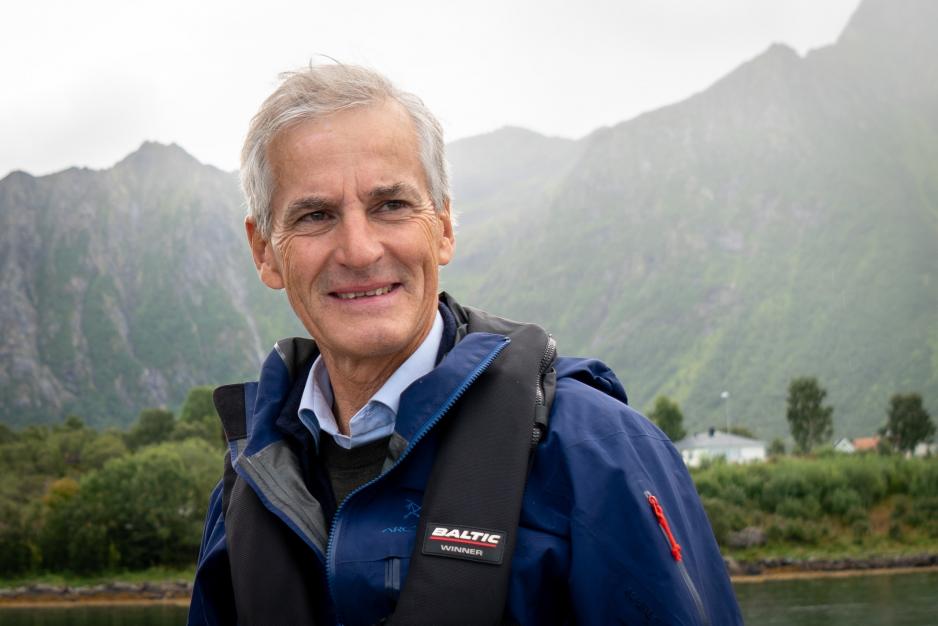Arne O. Holm says The war, he said, will pass. The real crisis involves the climate

Jonas Gahr Støre and Norway are in a special position concerning the climate challenges. (Photo: The Norwegian Labour Party)
(Commentary) Not long ago, I sat together with European researchers and politicians on a stage in Rome and discussed security policy in the Arctic. We had come to a point in the program where it was time to let the audience comment and ask questions.
A tall professor in the back of the hall rose and asked to speak. He had a message for us who sat on the stage.
“The war,” he said, “… will pass. The real crisis involves the climate.”
In a few days, 197 countries will meet for a climate summit in Egypt. Although, the number of countries participating is somewhat uncertain. The newly elected British Prime Minister, Rishi Sunak, announced the other day that he did not see any reason to participate. After massive criticism, he changed his mind, and in pompous terms on Twitter nevertheless signed up for the conference.
With and without Russia
Norway, with Prime Minister Jonas Gahr Støre in the forefront, will of course be present. Along with other important delegations from other Arctic countries. That is, all except Russia. President Vladimir Putin has declared that he sees no reason to attend the summit.
Poverty often coincides with where climate destruction hits the hardest.
It is not important enough for a belligerent despot.
However, Russia will still be a main character at this summit. Not by virtue of their participation, but because of its brutal war against Ukraine.
The war is not only devastating for the climate, it has also moved the attention from climate destruction to war destruction. A tour of the US and Europe has shown me this with all possible clarity. Where the climate was once the main topic, delegates and lecturers are now crowding around security policy discussions and lectures.
Where we once discussed how to reduce emissions, the discussion is now on how we will increase the production of oil and gas.
Only exceptionally, like in the case of the Italian professor, it is pointed out that the biggest crisis facing the globe, also after Russia attacked Ukraine, is climate destruction.
Not new aims, new methods
This year’s summit in Sharm el-Sheikh in Egypt is not about determining new aims for emissions. It is first and foremost about how the world is to achieve these aims. Secondly, it is about how rich countries can enable poor countries to reduce their emissions. Poverty often coincides with where climate destruction hits the hardest.
Not everyone believes it possible to reach the climate aims in the Paris agreement and points instead to measures and investments which can enable the world to adapt to an inescapable rise of temperature.
A few days before the summit, the Norwegian government presented an updated version of its climate aims. Norway is in many ways in a special position concerning the climate challenges and sits on all sides of the table.
Norway sits on all sides of the table.
We are giants when it comes to the production of oil and gas and we are participating in the race to increase production to compensate for the loss of Russian, fossil energy.
Norway is a part of the Arctic, where a temperature rise could have dramatic effects.
In addition, we are one of the world’s richest countries, and therefore also able to, if we want, shoulder parts of the bill for poor countries.
Ambitious aims
In sum, this is a part of the government’s new climate ambitions, as they were presented the other day. Nor is Norway not content to stand by its previous commitments or aims. Prime Minister Jonas Gahr Støre has announced that emissions are to be cut by 55 percent. Not 40 percent as was decided a few years ago, nor 50 percent as was determined in 2020, but 55 percent. The cuts are constantly compared with emissions as they were in 1990.
It is ambitious, especially since we have only been able to reduce emissions by 4,7 percent since 1990. It took us 30 years to cut these measly five percent. For the next seven years, i.e. until 2030, we are, according to the plan, cutting the remaining 50 percent.
In other words, we are to reduce emissions twice as much every year for the next seven years as we have been able to reduce the last 30 years. It almost becomes a trifle to remind us that the reductions in the last year are largely due to the fact that production on the gas plant on Melkøya in Northern Norway was closed due to a fire.
The government’s ambition is as easy to applaud as the means to achieve the aims are hard to find. Much is about electrifying the oil and gas industry, a move that in sum only moves the emissions out of Norway and into other countries.
A lot is also about financing climate measures in developing countries.
Of course, I do not know who the Norwegian prime minister will be in 2030, but unfortunately, I feel quite certain that it will be a prime minister who, with rhetorical tricks, will explain to us why the ambitions of the climate summit in 2022 could not be realized.
Also read
This commentary was originally published in Norwegian and has been translated by Birgitte Annie Molid Martinussen.


